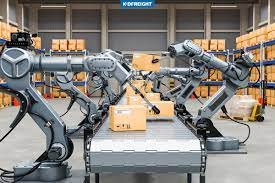Introduction
The field of drug design and discovery is undergoing a revolutionary transformation with the integration of quantum computing. Quantum computing’s unique ability to process complex calculations at unprecedented speeds holds the promise of accelerating the drug development process, leading to more effective and targeted therapeutic interventions. This article explores the intersection of quantum computing and drug design, highlighting its potential impact on advancing medical research and treatment options.
Quantum Computing Fundamentals
Before delving into its application in drug design, understanding the fundamentals of quantum computing is essential. Unlike classical computers that use bits, quantum computers leverage quantum bits or qubits. Qubits exist in multiple states simultaneously, thanks to superposition and entanglement principles. This allows quantum computers to process vast amounts of data and perform intricate calculations significantly faster than classical counterparts.
Overcoming Computational Complexity
Traditional drug discovery involves computationally demanding tasks, such as simulating molecular interactions and predicting drug-protein binding affinities. Quantum computing excels in handling the computational complexity inherent in these processes. Quantum algorithms can explore a multitude of possibilities simultaneously, offering a substantial advantage in accelerating the identification of potential drug candidates.
Simulating Molecular Structures with Quantum Superposition
One of the key applications of quantum computing in drug design is simulating molecular structures with quantum superposition. Conventional computers struggle to model the quantum nature of molecules accurately. Quantum computers, however, can represent multiple molecular conformations simultaneously, providing a more comprehensive understanding of how drugs interact with biological targets.
Quantum Machine Learning for Drug Discovery
Quantum machine learning algorithms enhance drug discovery processes by rapidly analyzing vast datasets. These algorithms can decipher complex patterns within biological data, identify potential drug targets, and predict the efficacy of candidate compounds. Quantum machine learning accelerates the identification of promising drug candidates, streamlining the early stages of drug discovery.
Optimizing Molecular Docking Simulations
Molecular docking simulations, crucial in understanding how drugs interact with target proteins, are computationally intensive. Quantum computing’s parallel processing capabilities enhance the efficiency of these simulations, allowing researchers to explore a broader range of docking possibilities. This optimization improves the accuracy of predicting how drugs bind to their targets, a critical aspect of drug design.
Quantum Entanglement for Enhanced Data Correlation
Quantum entanglement, a phenomenon where qubits become interconnected regardless of distance, contributes to enhanced data correlation in drug design. This property allows quantum computers to analyze complex relationships within biological datasets more effectively. By uncovering hidden correlations, quantum computing aids in identifying novel drug-target interactions and potential therapeutic pathways.
Accelerating Quantum Chemistry Calculations
Quantum chemistry calculations form the foundation of drug discovery, providing insights into molecular properties and behavior. Quantum computers excel in performing these calculations at speeds unattainable by classical computers. This acceleration enables researchers to explore a broader chemical space and refine drug candidates with greater precision.
Quantum Annealing for Optimization Problems
Quantum annealing, a specific quantum computing paradigm, is particularly effective in solving optimization problems inherent in drug discovery. It aids in optimizing parameters such as drug dosage, formulation, and administration schedules. Quantum annealing accelerates the fine-tuning of drug development strategies, contributing to more efficient and personalized treatment approaches.
Addressing Drug Resistance Challenges
Drug resistance poses a significant challenge in the field of medicine. Quantum computing, with its ability to analyze diverse datasets and simulate complex biological interactions, offers a powerful tool for understanding the mechanisms of drug resistance. This understanding can lead to the design of more resilient drugs that combat resistance effectively.
Collaborative Efforts in Quantum Drug Discovery
The successful integration of quantum computing in drug design requires collaborative efforts between quantum scientists, computational biologists, and pharmaceutical researchers. As quantum computing technologies continue to evolve, fostering partnerships and interdisciplinary collaborations becomes essential for unlocking the full potential of quantum drug discovery.
Conclusion
Quantum computing’s impact on drug design and discovery opens new frontiers in the quest for innovative and effective therapies. From simulating molecular structures to optimizing drug-target interactions, quantum computing accelerates the drug development pipeline. While challenges remain, the ongoing synergy between quantum technologies and pharmaceutical research holds the promise of revolutionizing the way we approach medical treatments, ushering in a new era of precision medicine and targeted therapeutic interventions.







